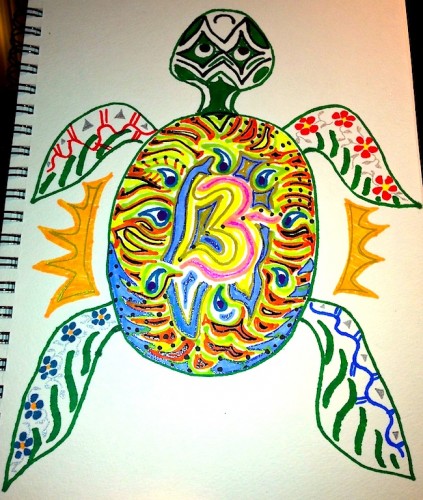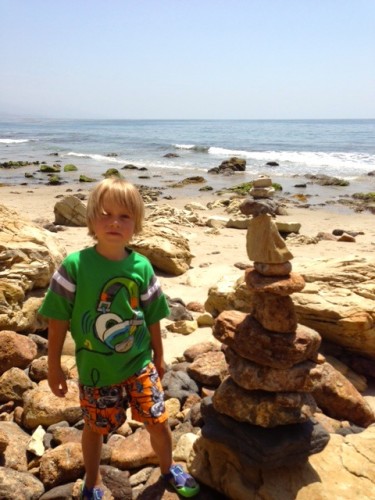Movement as Medicine (Pt. 3): Steady Is The Turtle
Happy Monday to You!
I hope you all had a restful weekend, or a productive one if that was your choice.
In this blog, I share:
1. Movement as Medicine (Pt. 3): Steady is the turtle…
2. An Aspiring Australian Poet’s Take on Our Generation
MOVEMENT AS MEDICINE (Pt. 3): STEADY IS THE TURTLE…

I don’t know if you’ve ever watched turtles at all, but they don’t move very fast. Having interacted with and watched sea turtles in Fiji and in Mexico, I noticed their pace of self-expression under water is also relaxed, and very fluid. They never seem to be in a rush; yet, I’ve never seen an obese, neurotic, emaciated or sedentary turtle living in its natural environment.
What can we learn about movement from observing turtles that may be a gift of wisdom to us all?
Reference:
1. Lawlor, R. (1991). Voices Of The First Day. Inner Traditions International, Ltd.
Enough Is Enough
If you study writings on native societies by open-minded observers, you can find a variety of references that correlate human conditions with animals.
The Aboriginals found the toad to be medicinal for a variety of digestive disorders (1); they observed that people with digestive trouble started looking like toads over time. As a person’s digestion diminished and their digestive tracts became inflamed, their bellies protruded, becoming the dominant feature of their body-shape.
Other such observations include notations like observing that when people consumed the blood of a bull, they were more likely to “rage”.
People living in desert regions tend to dry out and are often referred to as “lizards”. Many of us unconsciously describe people by animal association; “he’s big and moves like a bear”, or, “s/he moves as fast as a cat!” Sexually speaking, we all know what it means when someone is referred to as “a dog”.
Animals in the wild have a fraction of the health challenges we “intelligent humans do”. They don’t buy processed food, eat white bread, or make New Years resolutions promising to go to the gym and exercise. They do what they need to shelter, feed, and protect themselves.
Many animals express their creativity both during and after the process of meeting their daily needs are complete. Watch dolphins swimming together; they don’t stop to take Prozac and complain about how much work chasing down fish is, they play!
They do enough to be healthy. They naturally express their uniqueness without facilitating disease.
How Much Is Enough?
A general rule of thumb is that it takes at least 30 minutes of movement to maintain average or medically accepted concepts of health; being on your own feet and balancing your own body is the most effective form of movement for optimizing health in general.
That said, there are some other essential considerations that may help each person determine how much movement is ideal for their own health and vitality:
1. What is your dream? Only when we know what we intend to create and experience can we ever be clear as to how much movement will optimally facilitate that process.
2. What does your body-mind need? If you look like a toad and suffer digestive disorders, inflammation of organs, and have grown stumpy legs and a tired back from holding your guts up against gravity all day, working out is a bad idea!
A body that is inflamed is full of liquid fire. Working-out expresses the fire element or fire principle. Using gentle movements, such as the zone exercises I share in my book How To Eat, Move and Be Healthy! and my 4 Doctors multimedia ebook help cool and nourish the inner-body. This is a method I named “working-in”.
Working-in exemplifies the water principle, providing gentle, cooling, pumping movements and relaxed breathing.
If you are in good general health and want to add muscle or improve strength in general, then using more aggressive forms of exercise that have movements similar to your chosen mode of self-expression is the way to go.
Authentically energetic people can afford to “externalize” their energy with workouts. Those that struggle gaining the motivation to exercise are often being true to their instincts without realizing it.
What is missing in our culture is an understanding of movement as medicine. If we simply met ourselves where we are with exercise, we would be more likely to develop practical knowledge of how to use it to balance and heal ourselves.
For example, how many people convince themselves they are too tired to go to the gym every day, but overlook the fact that raking the grass or leaves in the yard, or cleaning the garage would give them movement, energy, and the joy of accomplishment.
If we see exercise as something we think “we have to do”, and we only know of exercise as painful or time consuming, then our toolbox becomes dangerously limited; imagine if we programmed the animals to act like we do? They would be too lazy to grow muscles and we’d have no flesh foods to eat!
If we see exercise as a natural need and essential mode of self-expression, and find ways to make it work for us based on our body-mind needs, then exercise can become anything, from splitting fire wood to weeding the garden, cleaning the house, stacking rocks, going for a walk, etc…
You know you are getting enough because you are unimpeded in your self expression, and you don’t wince every time you see yourself naked in the mirror!
You know you are not getting enough exercise when your ability to create and express your dreams diminishes to hope, and you’ve convinced yourself that your body doesn’t look any worse than other (sick) people’s do.
At the end of the day, we either choose to live in accordance with the natural principles of nature, for which we are expressions of, or we succumb to social programming. Proof of the dangers of social programming is all around you:
– Overweight, unhealthy doctors, nurses and health and exercise professionals in general!
– People doing one exercise repeatedly until their body breaks down, and then feeling as though they’ve died because they can’t get to a Cross-Fit, yoga, or spin bike class; usually addressed with stimulants and drugs until that formula breaks down…
– People watching others exercise and be tortured by those that abuse the science of exercise on what are called “reality TV” shows. Humm?
– Being told that aerobic exercise is necessary for heart health, and then being told to eat in ways that undermine your health wile doing your aerobic exercise…

Here you see Kim Nelli’s (www.getfitforbirth.com) son Kaden playing at the beach; they have been stacking rocks. Kim recently attended my zen-In-the Garden workshop and she is providing her son with an essential outdoor experience.
Kaden is practicing the creation of his immediate dreams, even if that dream is only to play! In the process, he isn’t likely to associate stacking rocks that the beach with “working-out”, but is likely to enjoy playing his way into fitness this way. There’s something we can all learn from children in this regard!
Conclusion
It’s really very simple. All you have to do is be clear on what your dream for yourself and your life is, and then live true to that process.
When you aren’t sure what to do, then you have the option of seeing someone like a Chek HLC Practitioner or Chek Practitioner (Corrective/High-Performance Exercise Specialist). More important than which professional you see is choosing to get help from people that have authentically achieved what you seek to experience.
In other words, don’t get health advice from sick doctors and don’t take exercise advice from exercise professionals that don’t exhibit the level of body-mind balance you aspire to.
Suggested Resource:
1. My audio and workbook program: The 1-2-3-4 For Addiction, Obesity & Disease
2. A Poet’s Take on Our Generation
In the youtube.com video link below, Abby Martin highlights Omar Musa, an Australian-Malaysian poet, who incorporates hip-hop and poetry to present a piece called ‘My Generation’. He talks to Abby about his inspiration, craft, and minority background in Australia.
I really enjoyed this video clip because Omar is a living example of how people of the younger generation today can rise to the occasion of encouraging awareness. Only when we are aware of something, can we ever begin to change it.
For example, most people in the world today have no idea what-so-ever where the meat they eat comes from, how the animals were raised, what they were fed, or how they were cared for (or not!) at slaughter. Once I show people slides and videos of commercial feedlots, most are suddenly very interested in organic free range farming!
Now they are “aware” and with that awareness, know how to direct their energy to create tangible changes in their life. In this instance, such awareness not only improves your own health, but the overall health of the planet!
I hope you enjoy watching this bright, motivated young man expressing his cultural roots:
Please enjoy this beautiful day!
It’s beautiful here today in Heaven and I’m about to get some stretching and body rolling done as part of my active-rest day.
Love and chi,
Paul Chek